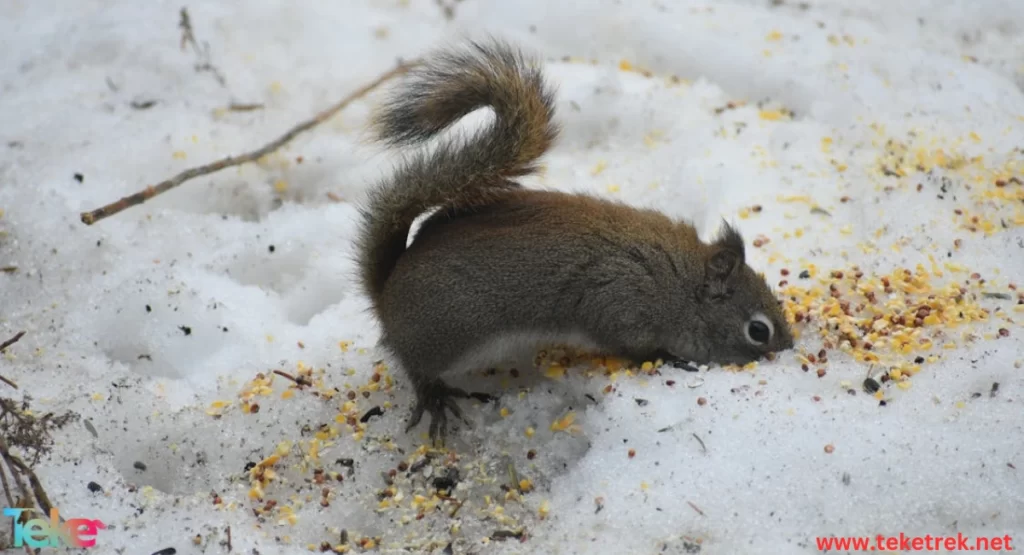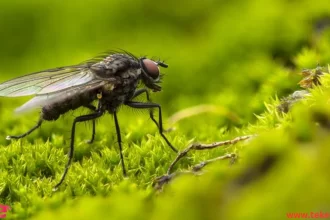The food that animals eat in winter is one of their most important survival strategies. With the advent of winter, the natural world turns into a scene that reflects the challenges and opportunities for living organisms that live in this harsh environment, which is controlled by low temperatures and accumulated snow, which makes life more difficult for wild creatures.
The cold winter season is a test of the ability of animals to measure the extent of their adaptation and strength to survive in such harsh environments, as finding food becomes a vital necessity for the continuation of life, as these animals face great challenges in obtaining food, starting from the scarcity of food resources to the need to adapt to periods of hunger. Therefore, animals adopt innovative and exciting survival strategies, whether by storing food or searching for unconventional sources of it.
Therefore, we will begin our journey today in the harshest environments that animals face to survive, to learn about the methods that animals resort to to obtain food during the cold season, in addition to their adaptation to harsh environmental conditions to ensure their survival. Prepare, dear reader, for this exciting journey, and let us begin.
Animal strategies for obtaining food in winter:
Animals follow precise strategies to obtain food in the winter. These strategies demonstrate the animals’ ability to adapt in innovative ways to ensure their survival during the cold season. This reflects their amazing ability to adapt to all difficult environmental conditions. Among these strategies are the following:
Storing food in advance:
Some animals adopt this strategy as they prepare for the winter, where they collect and store food in a remarkable manner. The most famous of these animals are:
Squirrels: Squirrels collect seeds and nuts during the warm seasons and store them in burrows or hidden places for use during the winter. This storage helps them obtain food when resources are scarce.

Immigration:
Migration is considered one of the strategies that animals follow to resist the cold winter, through their search for better environments in which food is available. Among those animals that carry out this strategy are:
Migratory birds: Many bird species travel long distances to warm areas during the winter, as these places provide them with abundant food resources and suitable living conditions.
Hibernation:
Some animals depend on winter hibernation to face the harsh winter cold, as they rely on reducing their general activity and saving energy consumption. The most famous of these animals are:
Bears: Bears significantly reduce their activity during the winter and enter a deep hibernation, relying on the fat stored in their bodies to provide them with the energy needed to survive during this long period of sleep.
Adapt to circumstances:
Some animals adapt to the scarcity of food resources by changing their diet, which depends on fresh herbs and other things. The most famous animals that rely on this strategy are:
Deer: Deer adapt to harsh conditions by eating bark and twigs when fresh plants are scarce. This adaptation helps them obtain the nutrients necessary to survive.
Examples of animals and their feeding patterns in winter:
The following examples show the diversity of feeding strategies among animals during the winter, which reflects their remarkable ability to adapt to harsh environmental conditions and continue to survive:
1- Wolves and hunting in groups:
Wolves are predators that adapt well to the winter, as they depend on hunting in groups, which enables them to hunt larger prey such as elk and moose, which would be difficult to reach alone. This group cooperation makes the hunting process more effective and helps ensure the survival of the group. In its entirety.
2- Rabbits and eating the remaining plants:
Rabbits search for plants remaining under the snow during the winter, relying on a diet consisting of twigs, bark, roots, and remaining winter plants. Rabbits dig through the snow to access these food resources, which helps them survive until spring returns.
3- Small birds and eating insects or seeds:
Small birds depend on a variety of food sources during the winter, while some birds feed on insects that hide under the bark or in the soil. Other birds also depend on seeds and berries as the main source of energy. These birds store food in the fall to use during the winter when they… Insects and fresh seeds are rare.

Environmental balance and the role of animals in winter:
By maintaining ecological balance and protecting natural resources, we ensure the continuity of these vital adaptations that help animals survive harsh winter conditions, reflecting nature’s ability to adapt and survive.
The nutritional patterns followed by animals in the winter play a vital role in maintaining environmental balance, through various feeding strategies such as food storage, hibernation, and migration, as animals contribute to:
Controlling the numbers of prey and predators.
Seeds are spread through birds and animals that depend on storing seeds.
Improving soil quality by feeding animals on plants and herbs by digging up the soil to search for them, in addition to the role of these animals’ waste in enhancing beneficial soil organisms.
It is worth noting that natural resources are considered the lifeline of animals during the winter, and the importance of these resources includes the following:
A vital food source for many animals, such as rabbits and deer, as branches, plants and trees provide them with rich food resources that help them face the harsh winter cold.
Natural resources such as caves and fallen trees provide refuge for many animals from harsh weather conditions.
Large branches and trees act as a natural barrier that protects small animals from strong winds and extreme cold.
At the conclusion of this article, we find that the food that animals eat in winter is one of their survival strategies during the cold winter, as the splendor of their adaptation is evident in their amazing innovations to survive in harsh environmental conditions, from deep hibernation to long migration, and from storing food in advance to… Changing the diet. All of these adaptations reflect the genius of nature and the ability of living organisms to adapt and withstand. The importance of these adaptations is not limited only to survival, but rather plays a vital role in maintaining environmental balance. Therefore, it is necessary that we assume our responsibility towards the environment and work We strive to preserve the natural resources that support these magnificent creatures. By protecting the environment by all possible means, in addition to helping animals survive and reproduce in all seasons.





